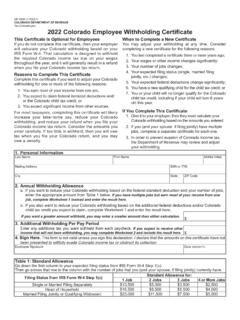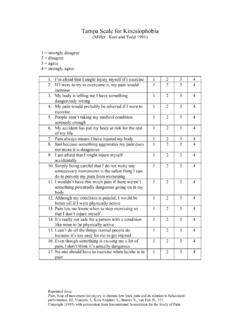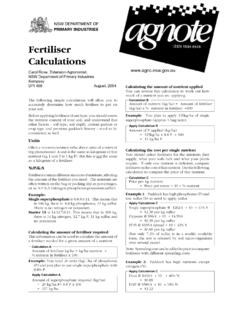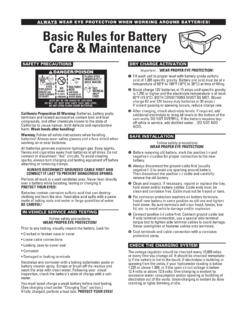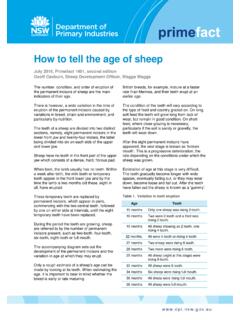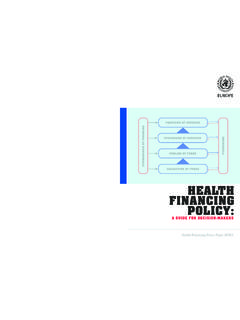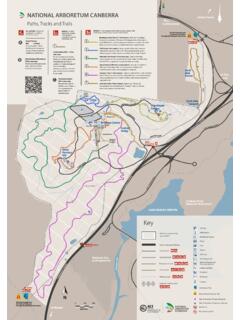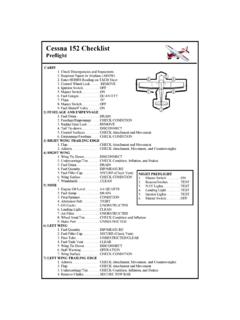Transcription of Vaccination and trust - WHO/Europe Intranet | News
1 How concerns arise and the role of communication in mitigating crisesIndividual decisionsCulture and social normsRisk perceptionEffect of building trustVaccination and trustiiiiiiiiiiAbstractWhen situations occur in which unwanted events are rightly or wrongly connected with Vaccination , they may erode confidence in vaccines and the authorities delivering them. This document presents the scientific evidence behind WHO s recommendations on building and restoring confidence in vaccines and Vaccination , both in ongoing work and during crises. The evidence draws on a vast reserve of laboratory research and fieldwork within psychology and communication. It examines how people make decisions about Vaccination ; why some people are hesitant about Vaccination ; and the factors that drive a crisis, covering how building trust , listening to and understanding people, building relations, communicating risk and shaping messages to the audiences may mitigate crises.
2 This document provides a knowledge base for stakeholders who develop communication strategies or facilitate workshops on communication and trust -building activities in relation to vaccines and immunization, such as immunization programme units, ministries of health, public relations and health promotion units, vaccine safety communication trainers and immunization advisory bodies. iviv World Health Organization 2017 All rights reserved. The Regional Office for Europe of the World Health Organization welcomes requests for permission to reproduce or translate its publications, in part or in designations employed and the presentation of the material in this publication do not imply the expression of any opinion whatsoever on the part of the World Health Organization concerning the legal status of any country, territory, city or area or of its authorities, or concerning the delimitation of its frontiers or boundaries.
3 Dotted lines on maps represent approximate border lines for which there may not yet be full mention of specific companies or of certain manufacturers products does not imply that they are endorsed or recommended by the World Health Organization in preference to others of a similar nature that are not mentioned. Errors and omissions excepted, the names of proprietary products are distinguished by initial capital reasonable precautions have been taken by the World Health Organization to verify the information contained in this publication. However, the published material is being distributed without warranty of any kind, either express or implied. The responsibility for the interpretation and use of the material lies with the reader.
4 In no event shall the World Health Organization be liable for damages arising from its use. The views expressed by authors, editors, or expert groups do not necessarily represent the decisions or the stated policy of the World Health document was developed with funding from the Pandemic Influenza Preparedness (PIP) Framework by Cornelia Betsch (Scientific Manager, University of Erfurt, Germany), Constanze Rossmann (Professor, University of Erfurt, Germany) and Katrine Bach Habersaat (Technical Officer, Vaccine-preventable Diseases and Immunization Programme, WHO Regional Office for Europe). Dina Pfeiffer (Technical Officer, Vaccine-preventable Diseases and Immunization Programme, WHO Regional Office for Europe) reviewed and provided input to the document.
5 Cindy Holtmann, Lars Korn, Linda Mummer, Philipp Moritz Schmid and Jascha Wiehn (Research Assistants, University of Erfurt, Germany) also contributed to its current document is a further development of the guidance manual Vaccine safety events: managing the communications response, published by the WHO Regional Office for Europe in 2013. KeywordsVACCINATIONTRUSTCOMMUNICATIONA ddressAddress requests about publications of the WHO Regional Office for Europe to: Publications WHO Regional Office for Europe UN City, Marmorvej 51 DK-2100 Copenhagen , DenmarkAlternatively, complete an online request form for documentation, health information, or for permission to quote or translate, on the Regional Office website ( ).Photo CreditsCover Getty ImagesPage 7 Getty ImagesPage 11 (left) , accessed 16 August 2016) (right) , accessed 16 August 2016)Page 15 WHO/M.
6 BingPage 19 WHO/D. OganovaPage 21 WHO/J. ChristensenLayout Alexandra Hayes Illustrations Maria Edith NielsenvvAcknowledgements ivIntroduction 1 Scope and purpose 2 Target audience 2 Supporting materials 3 WHO guidance on building trust in Vaccination 4 Events that may erode trust in vaccines and Vaccination 6 What research shows about how people make decisions about Vaccination 9 Risk perception and decision making 11 Modifying factors in decision making 14 ContentsWhat research shows about vaccine hesitancy and vaccine safety scares 17 Definition of vaccine hesitancy 18 The dual relationship between vaccine hesitancy and vaccine safety scares 20 What research shows about crises and how communication activities may mitigate them 23 Building trust 25
7 Listening to and monitoring public opinion 26 Communicating risk 28 Creating messages that convey more than just information 30 WHO guidance on building trust and responding to crises 35 References 37vivi1 IntroductionVaccines are some of the most efficient public health tools for promoting health and reducing the burden of infectious diseases. They also translate into significant socioeconomic returns (1) not only in child health and lower child mortality but also in poverty reduction, equity, production, education and strengthening health systems as a are very safe. Nevertheless, vaccine safety receives public scrutiny, and rightly so. When situations occur in which unwanted events are rightly or wrongly connected with Vaccination , they may erode confidence in vaccines and the authorities delivering them, and may ultimately put public health at risk.
8 WHO recommends that Member States should: build population resilience against vaccine rumours and scares through ongoing activities; ensure a strong programme, well prepared to respond to any event that may potentially erode confidence; respond immediately to any such event with appropriate actions based on an assessment of the , this may prevent a situation from escalating into a crisis, or minimize the damaging effects of a AND TRUSTS cope and purposeThis document was developed in response to a call from Member States for technical support and guidance in relation to building and maintaining confidence in vaccines and the authorities delivering them, both in ongoing work and during a crisis. Its development was guided by lessons learnt in countries and with the active engagement of national immunization managers and partners, primarily through subregional workshops held across the WHO European purpose of this document is to present the scientific evidence behind WHO s recommendations on building and restoring confidence in vaccines and Vaccination , both in the course of ongoing communication efforts and during a evidence draws on a vast reserve of laboratory research and fieldwork within psychology and communication, and covers the following areas: how people make decisions about Vaccination how they perceive risk, and how their decisions are affected by their attitudes, social norms and culture.
9 Why some people are hesitant about Vaccination and how this may increase the risk of a crisis; what makes a crisis, and how building trust , listening to and understanding people, building relations, communicating risk and shaping messages to the audiences may mitigate s practical guidance and recommendations in this field are set out in short form on pages 4-5 and are available in depth in the WHO online library (2). This document contains frequent references to relevant supporting documents in the library. These library references are clearly marked in yellow read more boxes such as the one icon indicates that you may find practical guidance and advice in the WHO online library audienceThis document was developed for stakeholders who want to gain an in-depth understanding of the issues surrounding communication and confidence-building in relation to vaccines and Vaccination .
10 It provides a foundation and knowledge base for those who are in charge of developing communication strategies or who facilitate training workshops on communication and trust -building activities in this area. Users of this document may include: immunization programme managers and staff; managers and staff in ministries of health; regulatory authorities for medicines, drugs and biologicals public relations and health promotion units; trainers offering workshops on vaccine safety and vaccine safety communication; media trainers; national and regional immunization advisory POINTT heory and practice where to find guidanceThis document presents the theoretical background to support and guide communication and confidence-building in relation to vaccines and Vaccination , both in ongoing work and during a does not present the practical guidance in relation to these issues.










